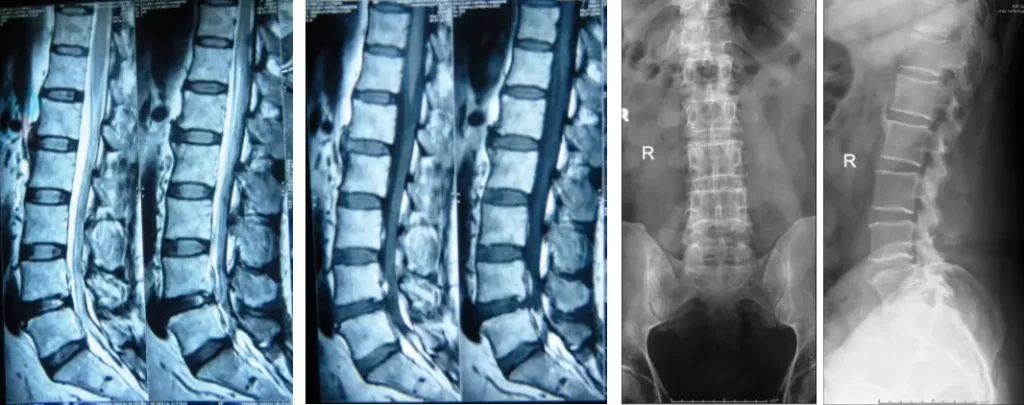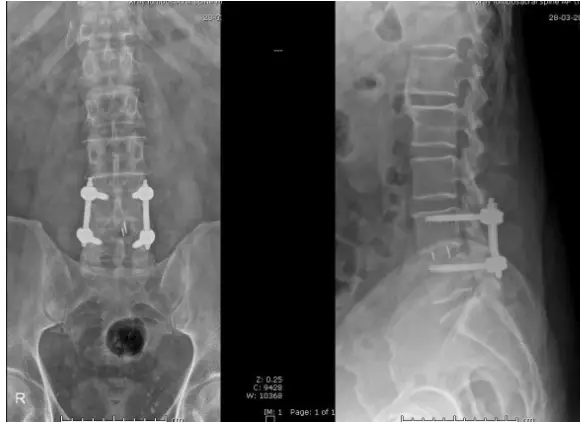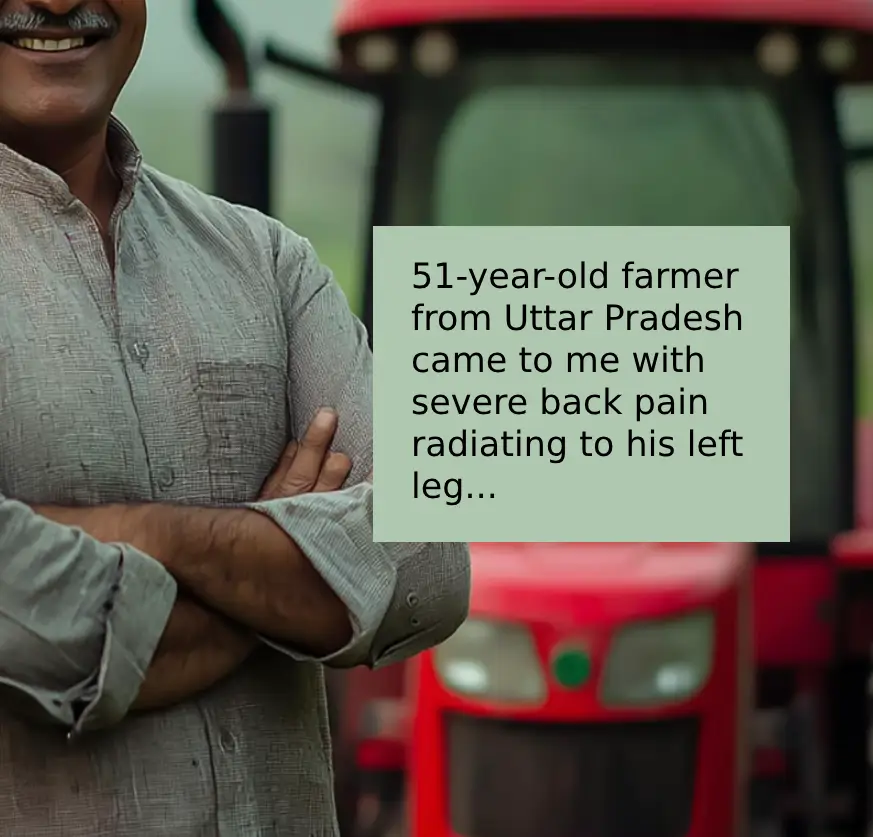A FARMER’S RETURN TO THE FIELDS
In February 2019, a 51-year-old patient from Uttar Pradesh came to me with severe back pain radiating to his left leg, a classic case of lumbar canal stenosis (L4-L5) with left leg radiculopathy. His symptoms had persisted for over two months, worsening progressively and interfering with daily activities, including walking and posture changes. Despite the pain, he had maintained bowel and bladder control, which was a positive indicator.
On detailed examination, he had significant tenderness in the lumbar spine and restricted movement. Sensory and motor evaluations revealed intact function, but the discomfort was hampering his life and work.

Given his diagnosis and the degree of functional limitation, we proceeded with a minimally invasive spine surgery — L4-L5 Miniopen TLIF (Transforaminal Lumbar Interbody Fusion) under general anesthesia on 4th February 2019.

The patient recovered well postoperatively, with a satisfactory condition at discharge. But what makes this case truly remarkable is not just the surgical success, but what came afterward.Six years later, this patient is now fully active, back in his village in Uttar Pradesh — not only walking and working, but driving a tractor and managing farming operations independently. His story is a testament to how minimally invasive spine surgery can restore function and livelihood, even in physically demanding professions like agriculture.
As a spine surgeon, it is deeply fulfilling to see patients not only recover but return to the very activities they feared they might lose forever. This case reinforces our commitment to advanced, minimally invasive techniques that offer fast recovery, minimal scarring, and long-term relief.

